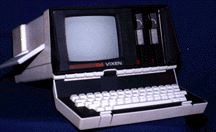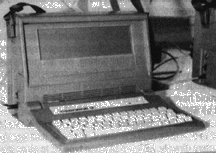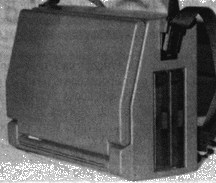|
Osborne Vixen |
|||||||||||||
|
 |
||||||||||||
|
COMMENTS Unfortunately, news of the Executive and Vixen's development leaked out while the O-1 was still in full production. Sales immediately dropped like a rock. Not surprisingly, production of the Exec and Vixen was delayed. Osborne Computer Company had to file bankruptcy. They eventually managed to pull out for a period of time, but the writing was on the wall. The date was 1983 and the IBM PC had been out for a couple of years and CP/M machines were on the way out. Osborne eventually produced a DOS laptop, and even tinkered with putting a DOS compatible in an Executive case, but it was too little too late. OCC went quietly into oblivion. I haven't gotten either of these, but I'm always on the lookout. Here's what the DOS laptop,aka Encore looks like, just in case someone has one and is willing to part with it. The DOS laptop was actually produced by Morrow. They also produced the Zenith Z-170 and a version of their own called the Pivot! Of course, Osborne did things a little differently, their version only had 16 lines while the others had the standard 24 lines on the display. Now if I could only get my hands on the Osborne version. |
|||||||||||||
 What the elusive Osborne Encore looks like when open. |
 The Encore buttoned up. These pictures were scanned from an issue of Forhorn magazine. |
||||||||||||